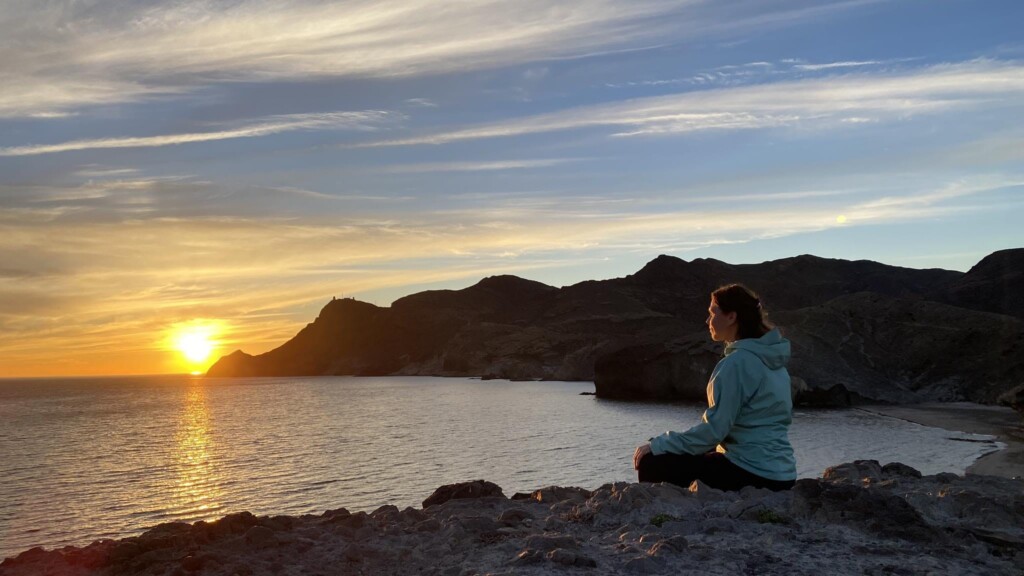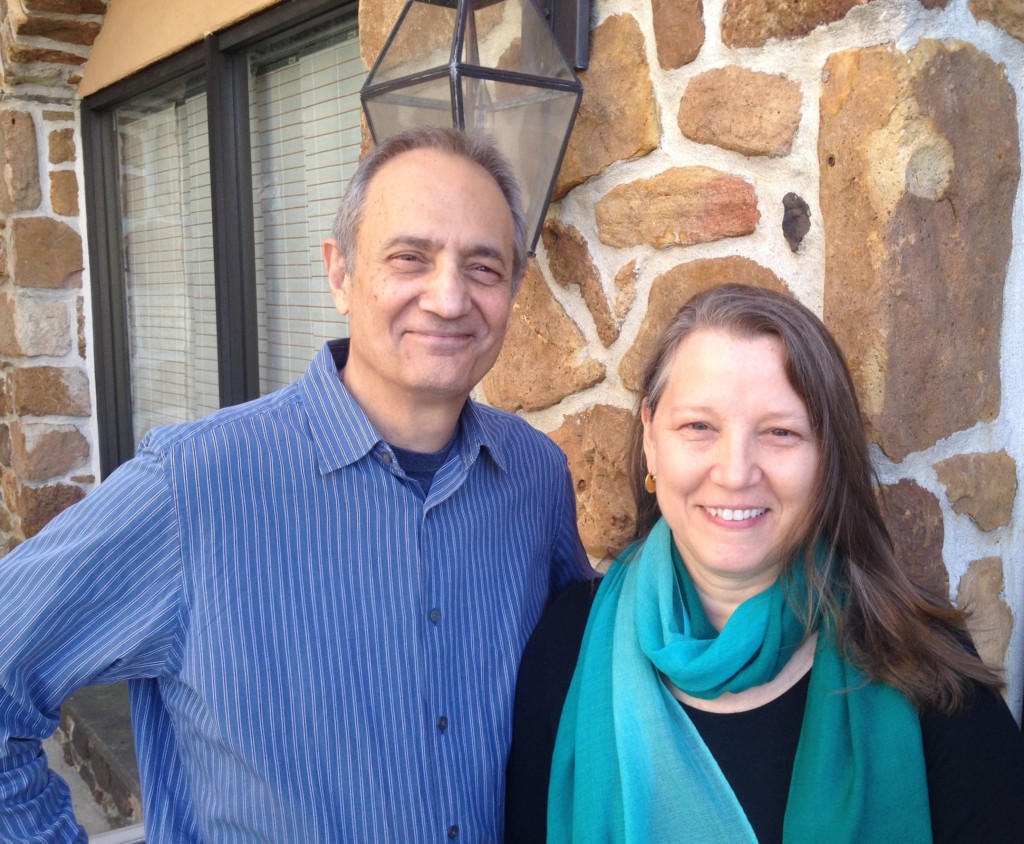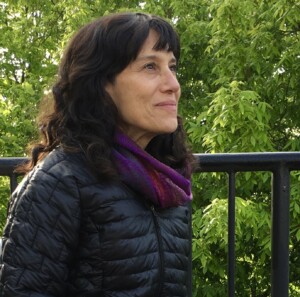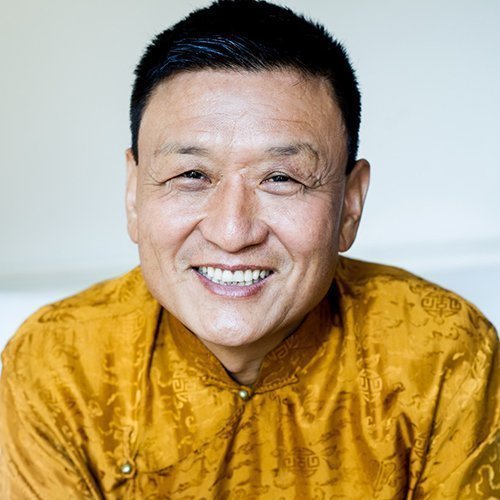By Joan Duncan Oliver
Suffering is unavoidable, a fact of life, the Buddha taught. And we live in anxious times. According to the Gallup 2018 Global Emotions Report—a survey of adults in 147 nations—worry, stress, and pain are at an all-time high worldwide. In the US, the American Psychological Association’s annual survey found that a significant majority of adults are even more anxious about the future of the nation than about money or work. But whatever anxieties we suffer, there’s good news from The 3 Doors: The Compassion Project, a spinoff of The 3 Doors Academy, is offering its popular nine-month course LIVE online beginning this September. Since it was launched in 2016, the Compassion Project’s program of teachings, reflection, and meditation has provided a practical, effective method for helping us transform our pain into compassion for ourselves, the people close to us, and the larger world.
Like The 3 Doors Academy, the Compassion Project is grounded in ancient Bön Buddhist teachings, reframed to address the pressures of life today. Marcy Vaughn and her husband, Gabriel Rocco, senior teachers in The 3 Doors, developed the Compassion Project with the support of The 3 Doors founder, Tibetan meditation master Tenzin Wangyal Rinpoche. Initially the course was offered to people in the helping professions, but its appeal quickly spread. Now participants include anyone who wants to expand their capacity for caring for self and others.
The thrust of the program–and the vehicle of transformation–is connecting with the openness that allows our natural compassion to arise. “You can’t talk about compassion without talking about suffering,” Marcy emphasizes. Instead of viewing our dissatisfaction, discomfort, or disconnection as something to avoid, in the Compassion Project suffering is seen as a doorway to awareness–the key to awakening compassion for others and ourselves. When we can be with our suffering fully, without judgment, opening to it with body, speech, and mind, and then resting in open awareness, our perception of pain shifts, allowing it to dissolve into the open space of being that is the natural source of compassion. Resting in the inner refuge–the open space of being–clears emotional blocks. Unwholesome habits lift. Painful reactivity no longer prevents us from responding spontaneously to each other and to life.
So can our direct experience bring us alive authentically? “The premise of the Compassion Project is that yes, it can,” Marcy says. “But the practice is to find out if it does, and to be particularly interested in the places where you’re not open and direct and warmly present. Can you be curious about discovering what supports you in allowing your defenses to loosen, to soften, so that something else can emerge? It’s interesting to discover what emerges, and to realize that you’re not stuck with your suffering. Nothing is as fixed or solid as it appears.”
To be curious in this way requires that we integrate personal reflection with meditation. Marcy explains, “Rather than reflecting on a text or scripture, you’re reflecting on your own life experience–how you’re living your life. You’re asking, what touches me? What nourishes me? What supports me? What challenges me? And then you’re sitting and feeling how you’re responding to this reflection. I don’t think many people do that sort of reflection. They think, but they don’t really listen to themselves.”
In reflection, we bring awareness to where suffering lives in the body, how pain colors our speech, what thoughts and emotions our discomfort brings to mind. Touching our experience with unbiased awareness, we investigate the pain.
How do you experience the suffering of yourself and others? How does the suffering of family members, loved ones, or close friends live in you? How do you experience news about the condition of the world or collective expressions of pain? Where do you feel this in your body? Does it affect your breathing? How do you acknowledge and care for your own suffering? Can you identify what might prevent you from accessing compassion for yourself or others?
Questions like these help us identify the limited sense of self that separates us from the spaciousness, warmth, and clarity of the natural mind.
The Practices
The Compassion Project draws on the simple but powerful core practices of its parent program, The 3 Doors Academy.
The 3 Doors: Accessing the inner refuge and its qualities of spaciousness, awareness, and warmth through the doors of stillness, silence, and spaciousness.
The 9 Breathings of Purification: A breath-focused technique to release patterns of aversion, attachment, and ignorance that block awareness of openness and compassion.
Tsa Lung: Seated yoga-like exercises to work with the five chakras, or subtle energy centers of the body, using breath and movement to clear habitual patterns and allow positive qualities to emerge.
The 5 Warrior Syllables: Engaging the power of sound and silence through singing seed syllables associated with the five chakras as another way to release limiting patterns and allow wisdom qualities to emerge.
The 3 Precious Pills: Informal practice that can be used off the cushion, in daily life, to access the healing medicine of the inner refuge through stillness of the body, silence of inner speech, and spaciousness of mind.
Personal Reflection: Bringing to mind conflicts and challenges experienced in relation to self, family and close friends, or professional life and the community, and “hosting” them with non-judgmental awareness, thereby allowing harmful patterns and limiting views to release and compassion to emerge.
To Compassion Project participants, the ability to not only recognize but also release blocks as they arise in daily life can be a revelation. For many, the program is a transformative experience that extends well beyond those first nine months. “Because I’ve spent most of my life ‘doing’ and not necessarily ‘being,’ this a seismic shift in my approach to living, and the benefits are profound,” Tami Barry, MD, says. “Being able to just be with the things I struggle with is another level of self-care that I haven’t ever experienced before.”
Tami was among the first group of participants in the Compassion Project. The monthly retreats were held at Contemplative Arts, Marcy and Gabriel’s studio in Bryn Mawr, Pennsylvania, from September 2016 through May 2017. Since then, Marcy and Gabriel have offered the 9-month program two more times: once in the studio and once live online. Beginning this September 25, 2019, and continuing through May 20, 2020, the Compassion Project will again be offered live online.
The 9-month online course is interactive, taught live via the Zoom videoconferencing service. The schedule revolves around one 2½-hour class of instruction and meditation each month (recorded for later listening), plus twice-monthly 1½-hour small-group practice and meditation sessions, and in Month 7, one full-day online retreat. Practices are assigned as homework for the weeks between retreats, and a virtual resource room of recorded teachings and meditations is accessible at any time. Assigned readings for the course are drawn from Spontaneous Creativity, Awakening the Luminous Mind, Awakening the Sacred Body, and Tibetan Sound Healing, all by Tenzin Wangyal Rinpoche, edited by Marcy Vaughn. Learn more and register.
The online meetings, live in real time, are scheduled to accommodate participants in multiple time zones. The 60 members of the first online Compassion Project tuned in from Europe and South America as well as North America. For participants like Qatana Samanen, the international focus is a plus: “It’s a chance to meet people I wouldn’t meet otherwise.” Qatana, a psychologist and sound healer from the Philadelphia area, has participated in the Compassion Project twice, once in the studio and once online, and she plans to enroll in the online program again this fall. “The loveliest part of the online program,” she says, “was being in the small groups, where people would share and you’d get a sense of the universality of people’s issues and dynamics. There’s a world-is-one feeling about it.”
How it started
The original impetus for developing the Compassion Project was closer to home: supporting health and human service professionals in the Philadelphia area who were at risk for burnout. Marcy had been teaching an eight-week meditation course to a group of formerly homeless women. That inspired her to consider the possible long-range impact on care if The 3 Doors practices were taught to the caregivers – to the people in professions dedicated to serving others. How could The 3 Doors practices help these providers reduce their stress levels and respond to others from a place of presence and compassion? “Usually people who work in helping professions and for non-profits can’t afford to take the time off or pay for meditation programs,” says Marcy, “so we decided to see if we could offer this program as a gift.”
Marcy found an anonymous donor and, with Gabriel, set about designing the program and recruiting participants. “We wanted people who already had some experience of meditation, who wanted to go further,” says Marcy. Both Marcy and Gabriel have extensive experience teaching meditation as senior teachers in The 3 Doors Academy, and Gabriel has long been associated with the The University of Pennsylvania’s Penn Program for Mindfulness. Their first Compassion Project program filled quickly.
When Michael Gawrysiak, an assistant professor in psychology at West Chester University in Pennsylvania, approached Marcy and Gabriel about studying the Compassion Project, they jumped at the chance. Much of the scientific research on Buddhist meditation to date has focused on mindfulness meditation. Dr. Gawrysiak’s study assesses the changes associated with the 3 Doors meditation techniques practiced continually over an extended period of time.
Of the 28 people invited to participate in the initial Compassion Project, 27 were study subjects, a group that included doctors, therapists, body workers, educators, and hospital administrators. The question was: Would the teachings and meditation practices of the Compassion Project associate with reduced stress and work-related burnout and increase self-compassion and mindfulness? Dr. Gawrysiak served as lead investigator, supported by the 3 Doors research team— Alejandro Chaoul, PhD, of the University of Texas MD Anderson Cancer Center’s Integrative Medicine Program and Claire Clark, PhD, of the University of Utah School of Medicine—along with Marcy and Gabriel. The preliminary results exceeded expectations, showing that the practices of the Compassion Project led to significant improvements in work-related burnout and general stress, as well as an increase in self-compassion and the ability to live in the moment in a non-judgmental way. Notably, these benefits increased progressively over the nine months of the program. In November 2018, Dr. Gawrysiak presented the findings in a research poster at the Mind and Life Institute’s International Symposium of Contemplative Research.
Benefits of the Compassion Project
But even before the research results were in, it was clear that the Compassion Project was a success. Participants were quick to cite the benefits of the program. “I’ve gained more understanding in relationships with my clients and a lot more compassion for the nurses and aides I work with,” says Ted Jordan, a music therapist. “I’m able to see what they have to deal with and understand a lot better where they’re coming from.” Ted’s experience was so positive that he signed up for the Compassionate Project a second time, as did his wife, Rebecca Jordan, who was working for a non-profit organization when she took the program the first time. “I started to feel a dramatic shift in my work,” she recalls.
Aleezé Moss, a Mindfulness-based Stress Reduction (MBSR) instructor, also found the Compassion Project helpful with clients. “Because my own practice is deepening, it comes into how I teach,” says Aleezé, associate director of the Myrna Brind Center for Mindfulness at Jefferson University Hospital in Philadelphia. “[Recently] when I led a workshop on cultivating compassion, I could really feel the depth of my own practice supporting how I was able to hold the space.” And the benefits have continued. “I feel the power of these practices,” she says. “What I’m seeking I already have within me.”
For newcomers, the Compassion Project offers a solid introduction to the core practices of The 3 Doors in a supportive environment. Online participants have the added advantage of being able to access the teachings and guided meditations from anywhere in the world. Whether experienced in person in the studio or live online, the program is a way to engage with the teachings and practices of The 3 Doors Academy even if you’re unable to invest the time involved in attending the Academy itself.
Rena Potok, a Philadelphian who wears multiple hats as a writer, editor, yoga instructor, and college professor, has done the Compassion Project twice and says the Academy “is definitely in my future” when time permits. “These programs have literally saved my life,” she says. “When I started the first 9-month Compassion Project, I had just ended an abusive relationship, and I was in tatters. The work that I did with these meditation practices allowed me to heal.” Like many practitioners, Rena came to the Compassionate Project with previous meditation experience in other traditions, and she appreciates what she calls the “flexibility” of the practices. “I find the whole tradition very, very rich, with infinite wells of depth that never dry out and are always replenishing. And it’s always a different you who’s practicing.”
For graduates of The 3 Doors Academy, the Compassion Project offers a way to sustain the momentum and go deeper into the practices, while applying the teachings to new life challenges as they arise. Juanita Rockwell, a theater director and opera librettist who is an Academy graduate as well as a longtime Buddhist practitioner and student of Tenzin Wangyal, finds The 3 Doors practices so beneficial that she commuted to Philadelphia from her home in Baltimore to participate in the Compassion Project. “It’s a perfect way to dive back into the teachings,” she says. “Every time I do just one day, it feels like we just did a six-day retreat because it plugs me into the experiences I’ve had.”
Artist Kathy Hayden, a Philadelphian who is also a graduate of The 3 Doors Academy, says, “My exposure to these teachings broke so much open for me that when they were starting a new program—the Compassion Project—of course I wanted to be part of it.” She participated in the abbreviated 6-week in-person course and is completing the 9-month in-person program this month. The effect on her life has been dramatic, Kathy says. “I’m much less reactive. I’m more confident. Doing the 3 Doors practices has given me a growing confidence in knowing the right thing to do in stressful situations.” To her surprise and delight, it has even reversed a long-troubled relationship with her mother.
For some, seeing the positive effect of the practices on a friend or family member inspires them to sign up for the Compassion Project. Nancy Sausser, a sculptor and arts administrator, joined after seeing “a lot of transformation” in Kathy, a lifelong friend. Every month, Nancy made the round trip from her home near Washington, DC, to the studio in Bryn Mawr, grateful, she says, for the opportunity to learn the practices. Nancy has practiced TM since college but finds practices like Tsa Lung and “sound healing”—the warrior syllables—”so much more than just meditation. I like the idea of taking the practice into daily life,” she adds. “The precious pills of stillness, silence, and spaciousness are a good window into that.”
Tonny Maas from the Netherlands, a graduate of the European 3 Doors Academy and the post-graduate practice-leader training known as the Presenters’ Path, credits the live online Compassion Project with helping her approach different groups and situations “with more awareness and kindness.” The program “gave me a kind of power supply,” she says. “The ongoing monthly meditations and collective reflections keep me alert.”
For another 3 Doors Presenter, Renée Daily, a graduate of two Academies who lives in upstate New York, the Compassion Project “was like 3 Doors graduate school.” She finds it supportive in her work as a hospice volunteer and twice a month when she leads a group of eight women in practice. As a result of the online discussions with Compassion Project participants, she “feels a confidence growing in an area in which I had no prior experience.” Much of that confidence, Renée explains, comes from experiencing how Marcy and Gabriel guide the practices.
The teachers
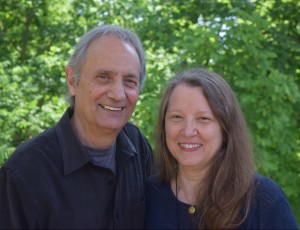
The promise
Ultimately, coming alive to our inherent healing capacity is the promise of the Compassion Project. As Patricia McIntyre, PhD, a psychotherapist and 3 Doors Academy graduate who was in the first Compassion Project group, observes, “These practices really open our hearts, first to ourselves, and then to the people in our lives, and then to the world around us. And isn’t that what compassion is all about: opening our hearts to ourselves, to our families, and to the larger world?”
————–
Joan Duncan Oliver is an award-winning journalist and author whose most recent book is Buddhism: An Introduction to the Buddha’s Life, Teachings, and Practices. She has been a Buddhist practitioner for 40 years, and is a graduate of The 3 Doors Academy and Compassion Project.

